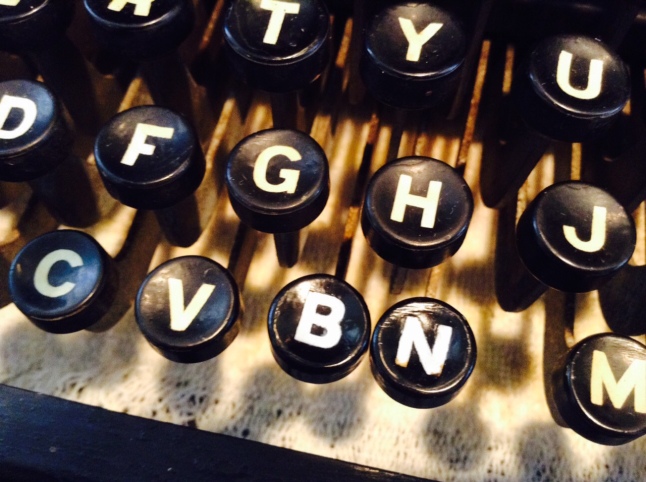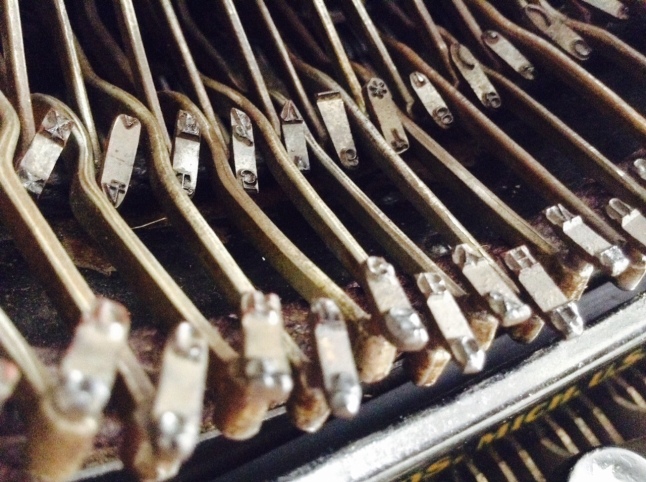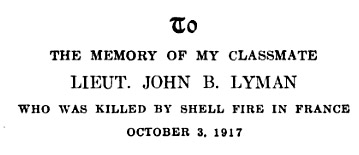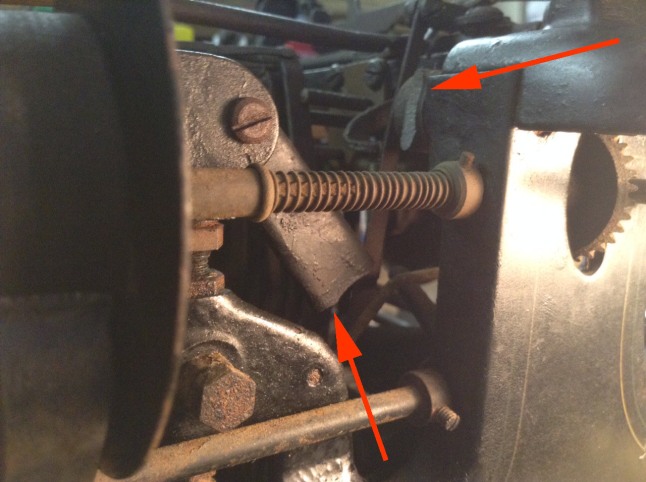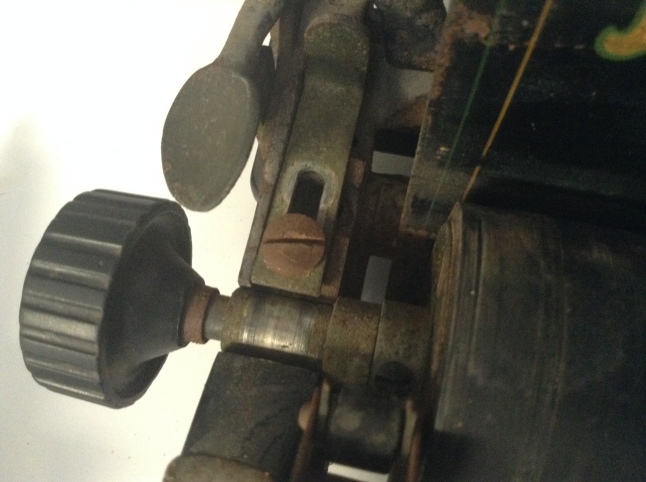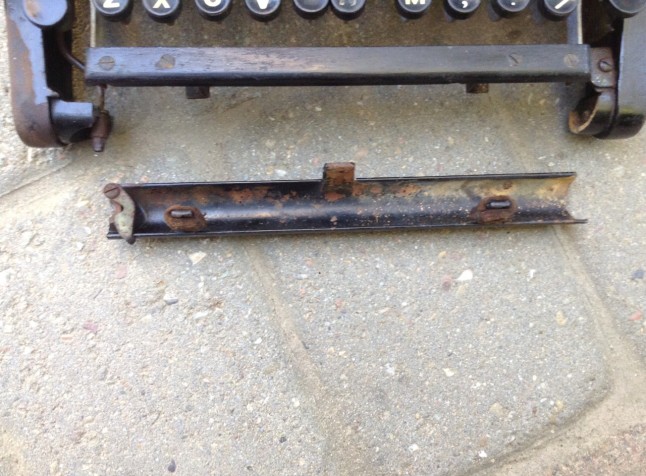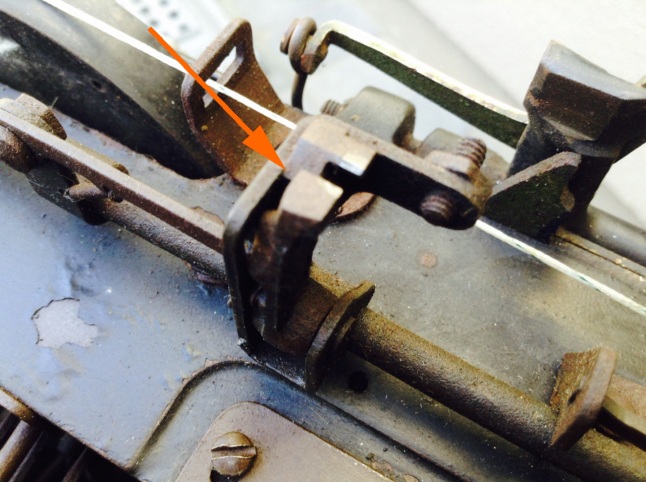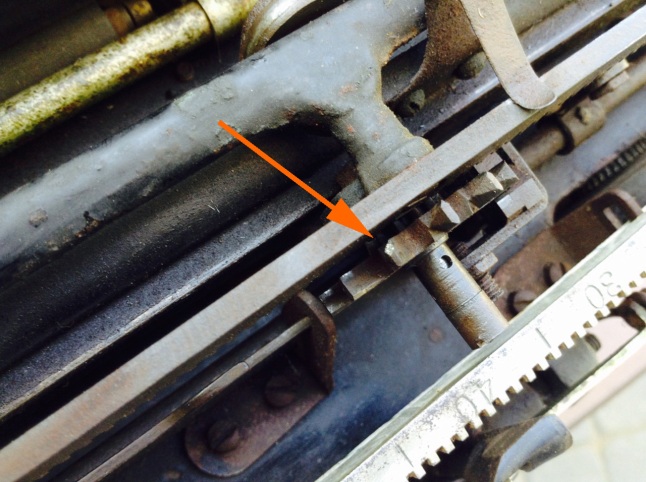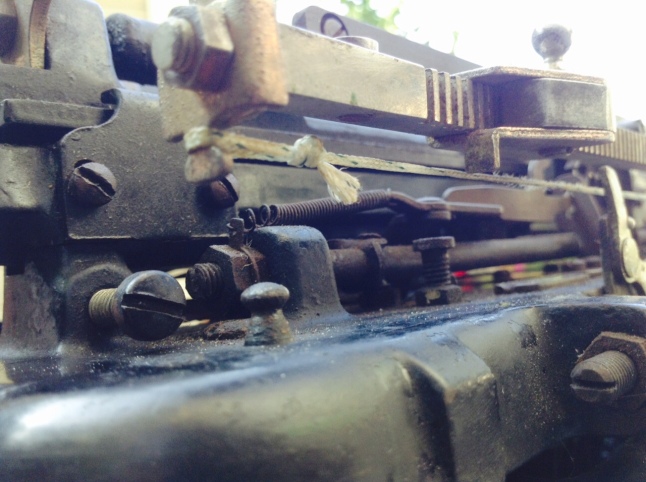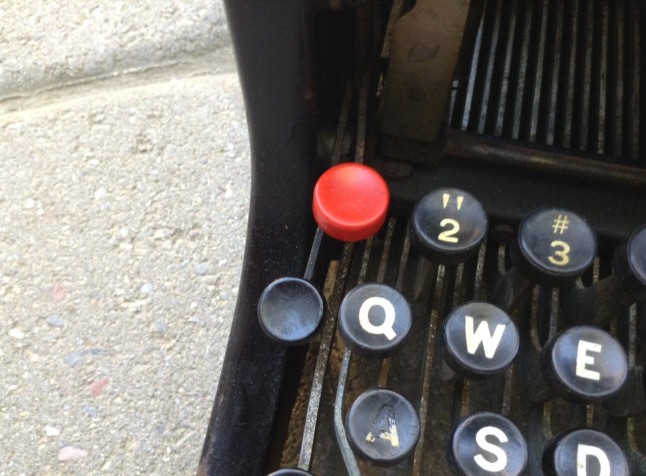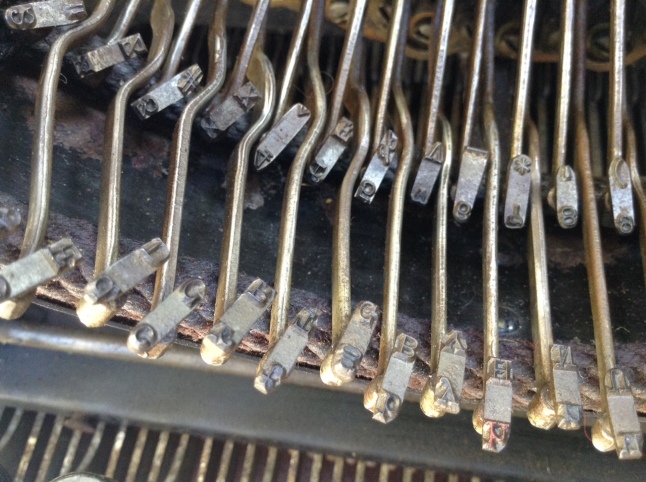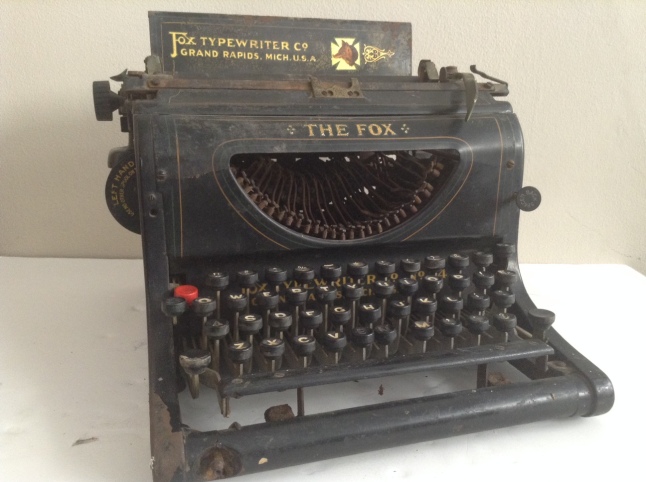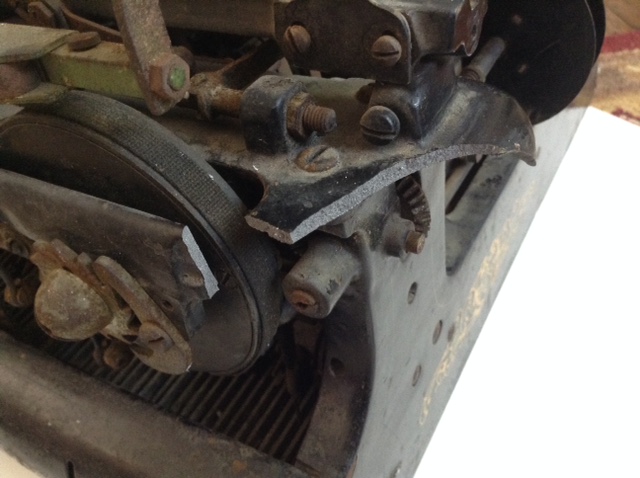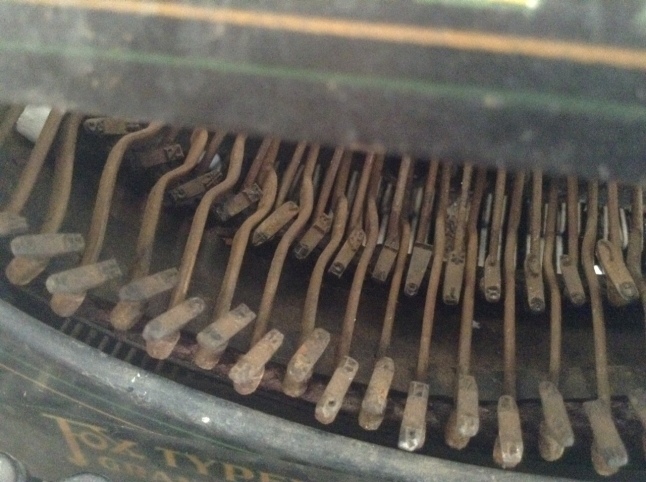I tend to drag home some really sorry-looking typewriters, so people ask me, “Why do you love junker typewriters so much?” And I tell them, “Because a junker typewriter is usually the beginning of a great story.”
I love junkers*. When I am out hunting, I will always prefer a dirty or broken typewriter to a clean and functional one. I will pay what I need to for a nonfunctional typewriter because a junker will always give me more than my money’s worth in entertainment. And they’re generally a whole lot cheaper. Sure, there are set-backs and frustrations and sometimes tears and curse-words, but at the end of the day, there’s a good story in that. And I always learn something new.
I find typewriter clean-up and repair stories endlessly fascinating. I know that they are not everyone’s cup of tea, but for a person interested in small machines, they provide wholesome entertainment and useful knowledge in large doses.
In fact, I love any type of machine clean-up / repair story. My husband and I are replacing a broken motor coupling on our 20+ year old Oster blender, and that story is GREAT. However, I will save it for a more appropriate forum like my blender blog, My Old Blender. 🙂
I love cleaning stories too. I find this video about cleaning a guitar with naphtha so compelling:
I could listen to that gentleman’s soft and pleasant voice ALL DAY.
Back to typewriters: sometimes typewriter repair is like a good detective story: you do your research, follow the clues and fix the typewriter (or catch the murderer). Typewriter repair stories have lots of twists and turns that keep me on the edge of my seat.
I love me some Vonnegut. Some people find his quirky rambles fatiguing, but he reminds me of some of my quirky, rambling family members, so I think of Vonnegut in an affectionately familial way. Anyhoo: Kurt Vonnegut was very interested in stories and the different forms that they take. In the 1940s, he tried to get his masters degree in anthropology from the University of Chicago. Unfortunately, they rejected his thesis. He described it as follows:
“The fundamental idea is that stories have shapes which can be drawn on graph paper, and that the shape of a given society’s stories is at least as interesting as the shape of its pots or spearheads.”
– Kurt Vonnegut, Palm Sunday
Here is Kurt Vonnegut describing some of those shapes:
I am a sucker for a good Cinderella story or Man in Hole story or Boy Meets Girl story. Who doesn’t love that uncomplicated rush of happy sentiment when the setbacks are overcome and the main character emerges victorious? Many typewriter repair and cleaning stories have happy endings though some do end ambiguously. Corona Four McDraggle: I am looking at you and your horrible, unresolved ribbon feed problem.
OK. So here’s the shape of my Fox No. 24’s story. The Y axis is typewriter condition (ranging from scrap metal up to pristine condition) and the X axis is progression through the story, the passage of time.
Here’s the story of the Fox No. 24:
A. I spot the Fox No. 24 on eBay. It looks bad, a bit of a rust-bucket, but most of the pieces seem to be there, so I buy it. I nervously await its arrival.
B. The Fox arrives, and I am over the moon. It’s in a rough, nonfunctional condition, but it’s more beautiful and strange in person than in pictures.
C. I notice that the back corner is broken off the machine.
D. The drawband snaps as I remove the carriage from the machine.
E. Inside the machine, I see two broken shifting arms. The broken front frame bar falls off. This is rock bottom. I cry a little (a rasping Snoopy cry).
F. After cleaning and lubrication, the carriage, typebars, ribbon vibrator, escapement begin to move.
G. The drawband re-attached, the machine begins to type.
H. Further cleaning and light repairs yield a beautiful, functional machine.
Compare that to the story of Posh Spice, the 1938 Corona Sterling:
A. I spot the Corona Sterling at a junk store. She’s absolutely beautiful and in perfect working order.
B. I bring her home, dust her off and she is absolutely beautiful and in perfect working order.
See? Not much of a story there.
The Corona Sterling has never really fit into my rough crowd of merry junkers. She lays about the house, bored, flipping through Vogue magazine, acting like she’s above it all. She has the aura of a sulky teenager (and she’s no teenager, that’s for sure). I will probably trade her for a special broken typewriter – to a person who can appreciate her.
I will continue to hunt and acquire junkers. They provide me with solid entertainment for the money and grist for the story mill.
*I use the word “junker” in a nicest way possible to mean any typewriter that is dirty, beaten-up and/or in less-than-functional condition. This is usually the result of being over-loved, under-loved, or both.







